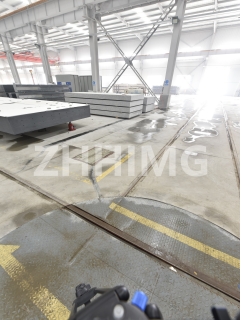Granite components can be an excellent choice for constructing an optical waveguide positioning device due to their unique properties of stability, rigidity, and low thermal expansion coefficient. Such features make granite an ideal material that can withstand various environmental factors and maintain the required position of optical waveguides under different operating conditions. In this article, we will discuss how to utilize granite components to build a reliable positioning device for optical waveguides.
First, it is essential to understand the basic function of optical waveguide positioning devices. These devices are used to position optical waveguides precisely and accurately to ensure proper light propagation through them. Therefore, the positioning device should be robust and stable enough to keep the waveguides' position fixed, even when exposed to external forces or temperature fluctuations.
The main advantages of using granite for building an optical waveguide positioning device are its hardness, low thermal expansion coefficient, and high compression strength. All these properties make granite highly resistant to wear and tear, impact stress, and temperature changes, making it an excellent material for positioning devices.
One of the most critical components of an optical waveguide positioning device is the base, which provides a stable and firm platform for the waveguides. The base must be stable and flat to ensure the waveguides' accurate positioning. Granite is an excellent choice for the base due to its high rigidity and low thermal expansion coefficient. This ensures that the base remains stable even when subjected to temperature changes, such as thermal expansion or contraction.
Another critical component of the positioning device is the clamping mechanism that holds the waveguides in position. The clamps must be firm enough to keep the waveguides in position without damaging them. Granite is an ideal material for the clamps due to its high compression strength, which ensures that the clamps hold the waveguides securely without causing any damage.
Finally, the optical waveguide positioning device must be precise and accurate in its movements to ensure that the waveguides' position remains fixed. The use of granite components for the positioning device's construction ensures the precise movements of the different components due to the material's stability and the absence of any deformation or wear and tear.
In conclusion, the use of granite components for optical waveguide positioning devices offers significant advantages over other materials due to their stability, rigidity, and low thermal expansion coefficient. These properties ensure that the device can withstand various environmental factors, including temperature changes, and maintain the waveguides' position accurately and precisely. With the increasing demand for high-precision optical components, granite components are an ideal choice for constructing robust and reliable optical waveguide positioning devices.
Post time: Nov-30-2023

